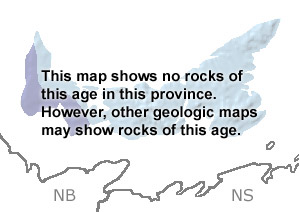

The Cambrian in Prince Edward Island, Canada |
|||||||||||||||||||||||||||||||||||||||||||||||||||||||||||
|
|||||||||||||||||||||||||||||||||||||||||||||||||||||||||||
Paleontology and geologyCambrian rocks are not exposed at the surface on Prince Edward Island. Information obtained from drill cores and by looking at Cambrian-age rocks in nearby Nova Scotia tell us that PEI was part of the small paleocontinent called Avalonia. This paleocontinent lay closer to what are now Europe (the paleocontinent called Baltica) and Africa and South America (both part of the paleocontinent of Gondwana) than to what is now the North American continent (the paleocontinent called Laurentia). Cambrian rocks are mostly grey shales and siltstones deposited into a marine basin. Late Cambrian rocks are primarily shales and limestones formed from sediments deposited in relatively shallow marine water. Fossils found in these rocks elsewhere in the Maritime region of Canada include brachiopods, crinoids, trilobites and graptolites. Comparison of this assemblage with those found elsewhere indicates that the Avalon Zone was near what are now Europe and Africa (i.e., Gondwana) during the Cambrian period. |
|||||||||||||||||||||||||||||||||||||||||||||||||||||||||||
|
|
|||||||||||||||||||||||||||||||||||||||||||||||||||||||||||
|
site tour |
about the site |
site map |
site credits |
page credits |
help |
FAQs |
contact |
||


